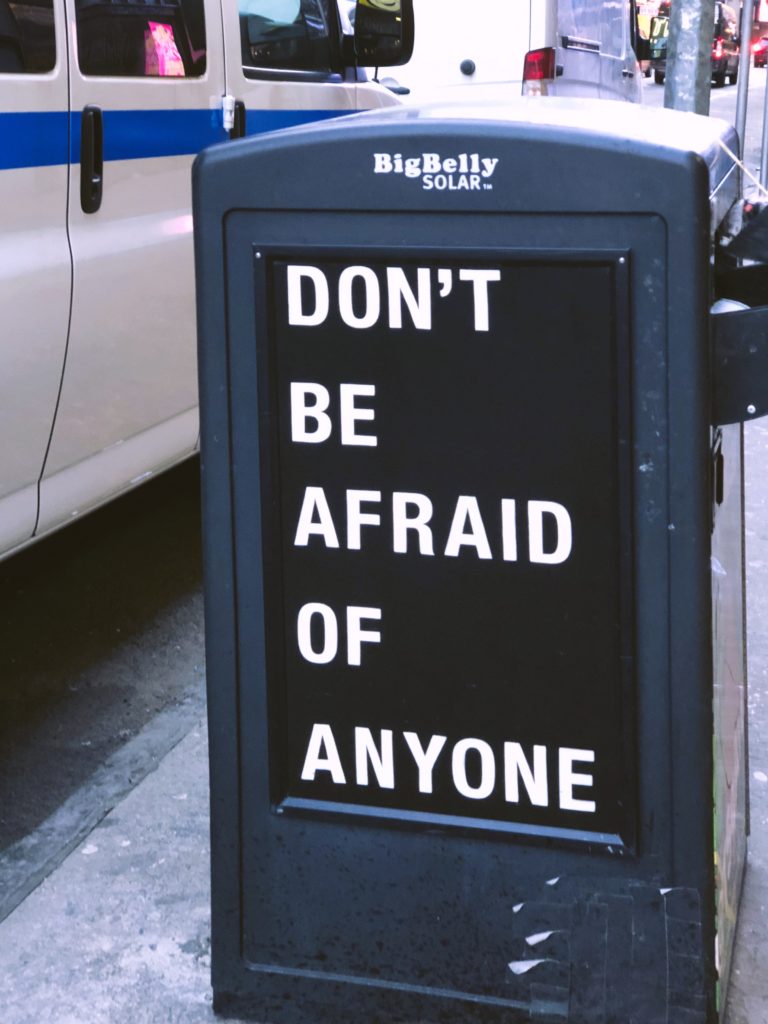
Journalism demands courage.
Or as Melvin Mencher, the legendary Columbia J-school professor put it: If you’re going to be a reporter, you have to be counterphobic.
Counterphobia, defined in an online glossary of psychiatric terms: “Deliberately seeking out and exposing onself to, rather than avoiding, the object or situation that is consciously or unconsciously feared.”
One of the scariest parts of being a reporter is the challenge of approaching strangers. Beginners, and even some veterans, fear rejection, an angry reaction or worse. The fearful mind can create dark fantasies.
The same holds true for writers who fear starting, or finishing, a story, an essay or screenplay, anxious that it will reveal their incompetence. Journalists aren’t the only creative types that fear failure.
When I was teaching student journalists, the first assignment I gave was to head out to their beat and ask five people what news they considered important but had not appeared in their local paper. Many students admitted later they were afraid to do it, but the experience changed their minds.
“I was surprised the most by the fact that I was able to get over my fears of doing the actual reporting,” wrote one student, Steve Myers, now enterprise editor at USA Today.
Whatever it is that scares you, be afraid, but do it anyway.
“No matter how the writing of the story turned out,” Myers said, “in my mind it was secondary to the fact that I knocked on all 18 doors on 56th Avenue S. I felt a little bit like an encyclopedia salesman, but I got over the nausea in the pit of my stomach by the fourth or fifth house.”
Even the most experienced journalists feel that fear.
“It would astound you to know how many reporters, whose job it is to talk to people, are painfully, horrifically shy,” Monica Hesse, a Washington Post columnist, once tweeted from a Presidential campaign trail. “I’m here in New Hampshire and I get to eat one M&M every time I successfully interview another human.”
What may help is knowing that many people are terrified of journalists. Although it may be hard to believe, most people will be more afraid of you and the power you wield as a reporter than you are of them. Consider what J. C. McKinnon, a burly, stern-faced St. Petersburg police officer, once confessed to a group of my students: “I carry a can of pepper spray, a Glock pistol and 51 rounds of ammunition. But you’ve got something that can destroy me: a pen and a notepad.”
If you’re avoiding doing something—making the phone call, knocking on the door, visiting a part of your community you’ve never been to before —remember this about human nature. People love to talk about themselves. To share their opinions. They appreciate the attention.
Assertiveness reflects a belief in yourself. You have the right to ask questions, to approach someone for an interview, to request information, to write that short story or begin your long-delayed novel or script. Of course, bear in mind that people have the right to say no, but don’t let that deter you. Just try someone else.
Be counterphobic.
After all, as a savvy editor once said, journalism is all about one thing: Gulp. And go.
Acknowledge that you’re anxious and then go do it. When I’m really paranoid, I make a point of writing in my journal whatever my fear is, what I expect would happen, and then report back the outcome. Invariably, the feared result failed to materialize. On those rare occasions when it did, I found that I handled it or accepted the outcome.
Whatever it is that scares you, go ahead and be afraid, but do it anyway.
Just gulp. And go.

Photograph by Jon Tyson courtesy of unsplash.com